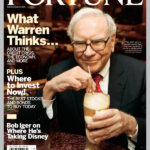“When there are moments of a lot of dust in the air, like what we saw a bit in April, you can go into some of this paralysis, but it still takes some time for that to show up in the numbers,” Goolsbee said.
April saw considerable market turmoil as President Donald Trump implemented a new widespread tariff policy that disrupted much of the U.S.’s trade with the world. The whipsawing nature of the policy put businesses in a holding pattern, as they waited to see where the dust would settle regarding the White House’s trade policy.
“It’s just, I think, not realistic to expect businesses or central banks to be jumping to conclusions about long-term things when you’ve got so much short-term variability,” Goolsbee said. “It’s just a very difficult environment.”
“People would ask me, ‘Are you a dove or are you a hawk?,’” Goolsbee said. “I say I don’t even know if I like birds.”
Instead, Goolsbee referred to himself as a “data dog” that bases his decisions on objective measurable data about the economy. Right now, he is waiting for more info, Goolsbee said.
“The first rule of the data dogs is, know the difference between the time for walking and the time for sniffing,” he said. The time for sniffing is when you need more information.”
But the Fed pays less attention to day-to-day changes, no matter how drastic they are, Goolsbee said. “It’s important to remember that at the Fed our job is to be the steady hand, not respond to the daily gyrations, either of the stock market or of policy pronouncements,” he said. “We’ve continued to get these numbers that at least suggest that it’s going okay.”









